The Kedarnath Temple, one of the most revered pilgrimage places for Hindus worldwide, is located in the Rudraprayag area of Uttarakhand. Kedarnath is a significant figure in Hindu mythology and spiritual consciousness as one of the twelve Jyotirlingas. At an elevation of 3,583 meters (11,755 feet), the temple is situated close to the Mandakini River’s source, surrounded by the majestic peaks of the Himalayas. The temple is an essential pilgrimage for people looking for redemption and inner peace because it is a part of the Char Dham Yatra, which also includes Badrinath, Gangotri, and Yamunotri.
Historical and Mythological Significance
There are several ancient legends associated with Kedarnath. The Pandavas, the main protagonists of the Mahabharata, are thought to have founded the temple first following their victory over the Kauravas in the famous battle of Kurukshetra. The Pandavas went to see Lord Shiva in order to atone for their wartime transgressions, but he declined to meet them. In order to elude them, Lord Shiva attempted to vanish underground in Kedarnath while assuming the shape of a bull. One of the Pandavas, Bhima, identified Shiva and attempted to stop him.
According to legend, Shiva’s body was divided into various portions that manifested at various points throughout the area. In Kedarnath, where a temple dedicated to Lord Shiva was subsequently constructed, the bull’s hump was preserved. The other four Kedars, generally referred to as the “Panch Kedar”—Tungnath, Rudranath, Madhyamaheshwar, and Kalpeshwar—worship the remaining portions.
Built with massive stone slabs over a rectangular platform, the temple’s construction is a mystery unto itself. It has endured the test of time and various disasters, including the terrible floods of 2013. The Jyotirlinga is credited to the eighth-century philosopher and theologian Adi Shankaracharya, who also rebuilt the temple. Since since, the Jyotirlinga has stood as a constant testament of spiritual fortitude.
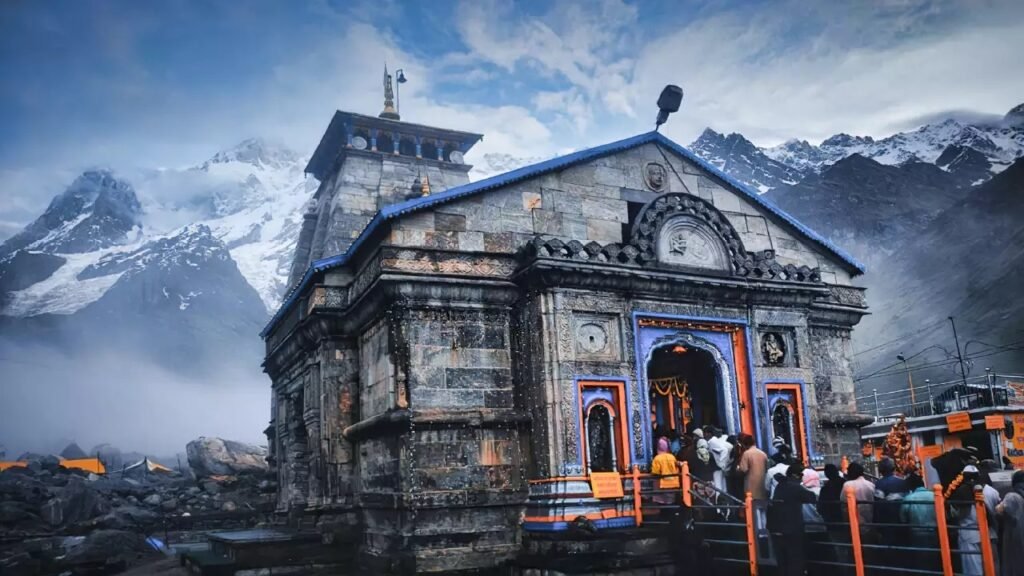
Table of Contents
Architectural Grandeur of Kedarnath Temple
The design of the Kedarnath Temple is a stunning fusion of resiliency and spirituality. The temple, which is made of large grey stones, is designed to survive harsh weather and naturally occurring disasters. The conical rock image of Lord Shiva, who is regarded as the primary deity, is kept in the inner sanctum, also known as the “Garbh Griha.” Pilgrims and guests can congregate for prayers and ceremonies in the “Mandap,” or outer hall.
The exquisite carvings on the temple walls, which depict a variety of gods, mythological tales, and scenes from Hindu texts, are a testament to the skill of ancient Indian artisans. The temple’s ceiling is embellished with a tiny spire at the top and a gold-plated dome, which heighten the feeling of holiness.
Best Time to Visit Kedarnath
Because of the high altitude and harsh weather at the temple, it’s important to organize your visit. The summer months of May through June and September through October are the best times to visit Kedarnath. The weather is generally good during this time of year, with temperatures ranging from 5°C to 18°C (41°F to 64°F). Because of the severe weather and a lot of snowfall, the temple is closed from November to April.
Nonetheless, the post-monsoon season (September to October) is also a terrific time for individuals seeking a calmer, more peaceful environment. The pilgrimage season is less congested than during the busiest months, the skies are clear, and the surrounds are verdant and lush.
Detailed Travel Guide: How to Reach Kedarnath
The journey to Kedarnath involves taking several routes, including plane, rail, road, and trekking. Here is a thorough how-to:
- By Air: Jolly Grant Airport in Dehradun is the closest airport to Kedarnath, located roughly 239 kilometers away. The airport has excellent connections to Delhi, Mumbai, and Bangalore, among other major Indian cities. To get to Gaurikund, the starting point of the Kedarnath walk, you can either take a bus or hire a taxi from the airport.
By Railway: Nearest train station: Rishikesh, almost 221 kilometers away from Kedarnath. There are excellent connections between Delhi, Haridwar, and Dehradun and Rishikesh. Ordinary busses or taxis will transport you to Gaurikund from Rishikesh. Another practical choice is the Haridwar Railway Station, which is 242 miles away.
By Road: Road access to Kedarnath is available up to Gaurikund. There are buses and taxis from major cities such as Dehradun, Haridwar, and Rishikesh. The route passes through lush forests, river basins, and gorgeous mountain routes with breathtaking vistas of the Himalayas. The 221-mile trip from Rishikesh to Gaurikund takes roughly 7-8 hours by car.
Kedarnath Trekking: The actual pilgrimage to Kedarnath starts with a 16-kilometer hike from Gaurikund. The hike is demanding and rewarding, with beautiful vistas of valleys, waterfalls, and snow-capped summits. The trek route has been thoughtfully designed with rest areas, shelters, and snack shops.
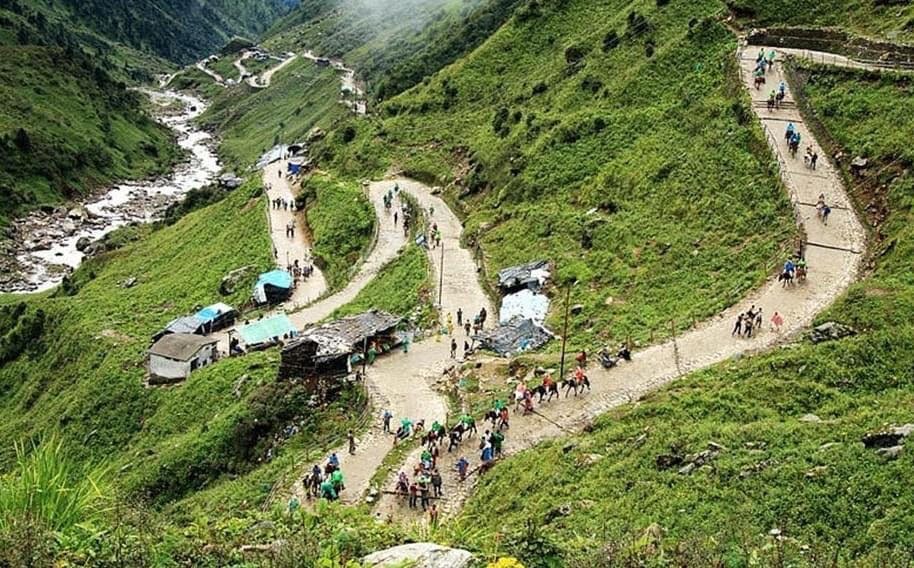
The Trek to Kedarnath
The actual pilgrimage to Kedarnath starts with a 16-kilometer hike from Gaurikund. The hike is demanding and rewarding, with beautiful vistas of valleys, waterfalls, and snow-capped summits. The trek route has been thoughtfully designed with rest areas, shelters, and snack shops.
A) Gaurikund: The trailhead, well-known for its natural hot springs. Before starting their trek, devotees frequently take a holy plunge here.
B) Jungle Chatti (4 km from Gaurikund): The first rest stop on the trail is a peaceful location surrounded by thick trees where you may take a break and take in the beauty of nature.
C) Bheembali (3 km from Jungle Chatti): A beautiful location with simple pilgrim amenities.
D) Rambara (3 km from Bheembali): Rambara was formerly a bustling community that was destroyed in the 2013 floods but is slowly being rebuilt.
E) Linchauli (4 km from Rambara): A well-liked break and refreshment stop before the last part of the journey.
F) Kedarnath Base Camp (1 km from Linchauli): A breathtaking view of the Kedarnath Temple and its surrounds is available from the base camp. There are several lodging choices available there, such as tents and guest houses.
Trek Tips:
- Fitness Preparation: Due to the moderate difficulty of the journey, it is advised to engage in regular exercise and endurance training.
- Altitude Acclimatization: To prevent acute mountain sickness (AMS), spend a day at Gaurikund getting used to the high altitude.
- Key Equipment: Bring rain gear, trekking shoes, warm clothes, energy bars, and a first aid kit.
- Pony and Palki Services: Helicopter, palki (palanquin), and pony services are offered to individuals who are unable to hike on foot.
Helicopter Services to Kedarnath
Helicopter flights are provided from Phata, Guptkashi, and Sirsi to Kedarnath for pilgrims who would prefer a faster approach. These services typically run from early in the morning until mid-afternoon, although they can change based on the weather. To minimize last-minute complications, it is advised to reserve the helicopter services in advance, particularly during the busiest times for pilgrimages.
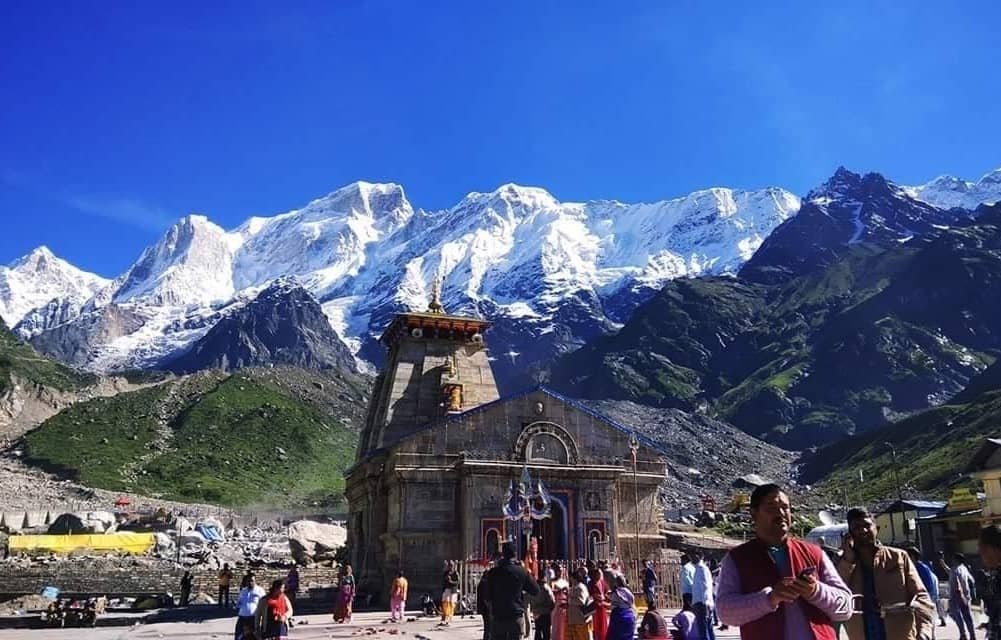
Accommodation Options in Kedarnath
- Kedarnath Temple Committee Guest Houses: Offer simple but cozy accommodation options.
- GMVN Guest Houses: Run by Garhwal Mandal Vikas Nigam, these provide tidy cottages, dorms, and rooms with basic amenities.
- Private Hotels and Lodges: There are several different private lodging options, ranging in price from inexpensive to moderate.
- Tented Camps: Several providers offer tented lodgings with food and basic utilities, which ups the adventure factor of spending time in the great outdoors.
Nearby Attractions Around Kedarnath
1. Bhairav Temple: This temple honors Bhairav, the ferocious incarnation of Lord Shiva, and is situated 500 meters uphill from the Kedarnath Temple. The Kedarnath Temple is thought to be protected by Bhairav Nath during the chilly winter months when it is closed.
2. Gandhi Sarovar (Chorabari Tal): The lake where Mahatma Gandhi sank his ashes is a glistening lake roughly 3 km from Kedarnath. The lake is a peaceful place for contemplation and meditation and provides captivating views of the surrounding peaks.
3. Vasuki Tal: Vasuki Tal, a high-altitude glacier lake 8 km from Kedarnath, is well-known for its breathtaking views and serene surroundings. It’s generally advised for more experienced hikers to take on the challenging journey to Vasuki Tal.
4. Triyuginarayan Temple: This temple, located about 25 miles from Kedarnath, is thought to be the location of the marriage between Lord Shiva and Goddess Parvati. An everlasting flame that has been blazing for millennia is located in the temple.
Spiritual Experience at Kedarnath
A trip to Kedarnath is an investigation of the inner self as much as a pilgrimage. A deep sense of serenity and tranquility is produced by the temple’s spiritual aura mixed with the breathtaking natural beauty. The chants of “Har Har Mahadev” reverberate over the mountains, enveloping the believers in a divine love and devotion that fills their hearts. Your memories will last a lifetime when you first lay eyes on the historic Kedarnath Temple, situated against the towering peaks covered in snow. You experience a profound sense of kinship with the holy, awe at the majesty of nature, and an all-encompassing tranquility that arises from being in such a hallowed location as you stroll through the temple complex.
The complex ceremonies carried out by the temple priests include the morning and evening “Aartis,” which are spiritual performances in and of themselves. An unearthly atmosphere is created by the conch shells, the rhythmic chants, the aroma of incense, and the sight of the temple illuminated by oil lamps. Here, pilgrims can spend hours in contemplation of their own lives and the universe at large, either through meditation or just absorbing in the spiritual atmosphere.
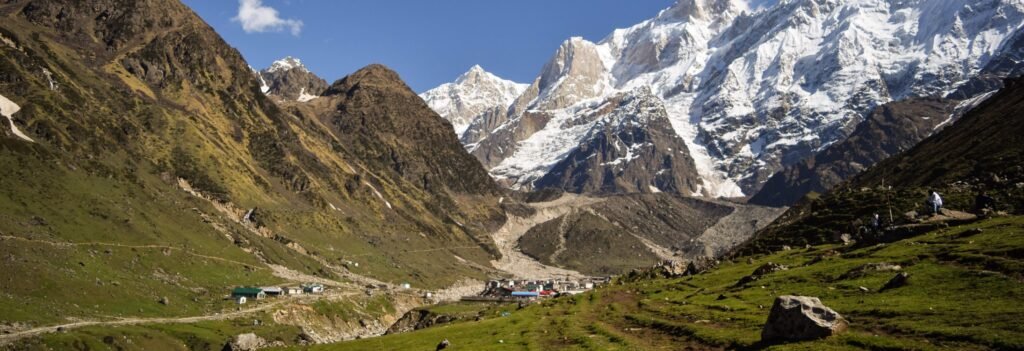
Tips for a Safe and Comfortable Journey
1. Plan Ahead: Make sure to schedule your travel and lodging well in advance of your trip. Remember the temple’s opening and closing times.
2. Weather Precautions: Because temperatures can drop abruptly, pack enough warm clothes. Because the weather in the mountains is unpredictable, you should also bring rain gear.
3. Health and Safety: Before organizing the hike, anyone with medical disorders like asthma or heart issues should speak with a doctor. Additionally, having a small first aid kit on hand is advised.
4. Respect Local Customs: Take note of regional traditions and customs. Do not litter and show consideration for the environment. When feasible, use biodegradable items.
5. Stay Hydrated: Make sure you have adequate water with you for the entire trip. Carry a small amount of snacks, but don’t overload yourself.
Conclusion
Kedarnath is a soul trip more than merely a place to visit. It’s a location where the unadulterated might of nature collides with divinity to create an atmosphere that feels more like the sky. Whether you are a nature lover enthralled with the Himalayas, a pilgrim seeking spiritual development, or a tourist searching for adventure, Kedarnath has something meaningful to offer everyone. A profound spiritual awakening and the breathtaking splendor of the temple and its surrounds make the difficult journey worthwhile.
Therefore, if you want to go on an incredible spiritual adventure, answer the call of the Himalayas, travel to Kedarnath, and let the holy energy to lead you to a peaceful and self-discovering path.








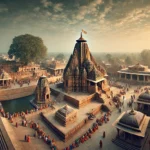
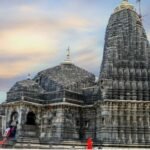


1 thought on “Kedarnath Temple: A Divine Journey to the Abode of Lord Shiva”